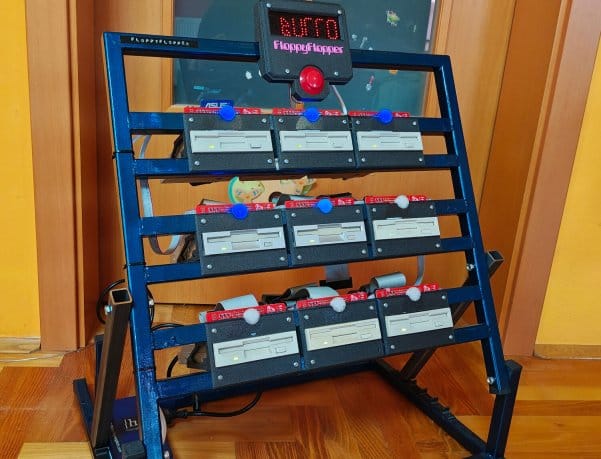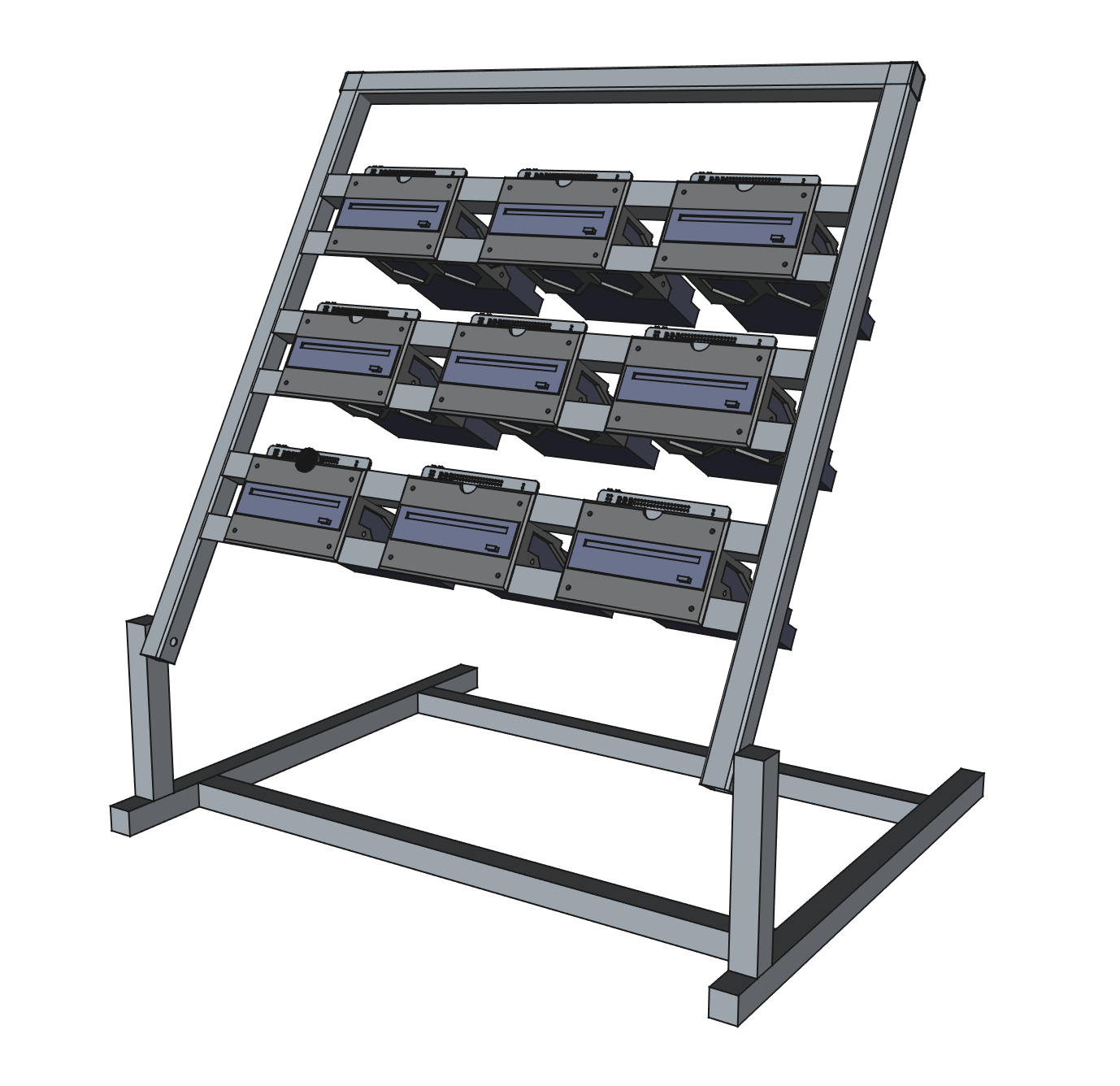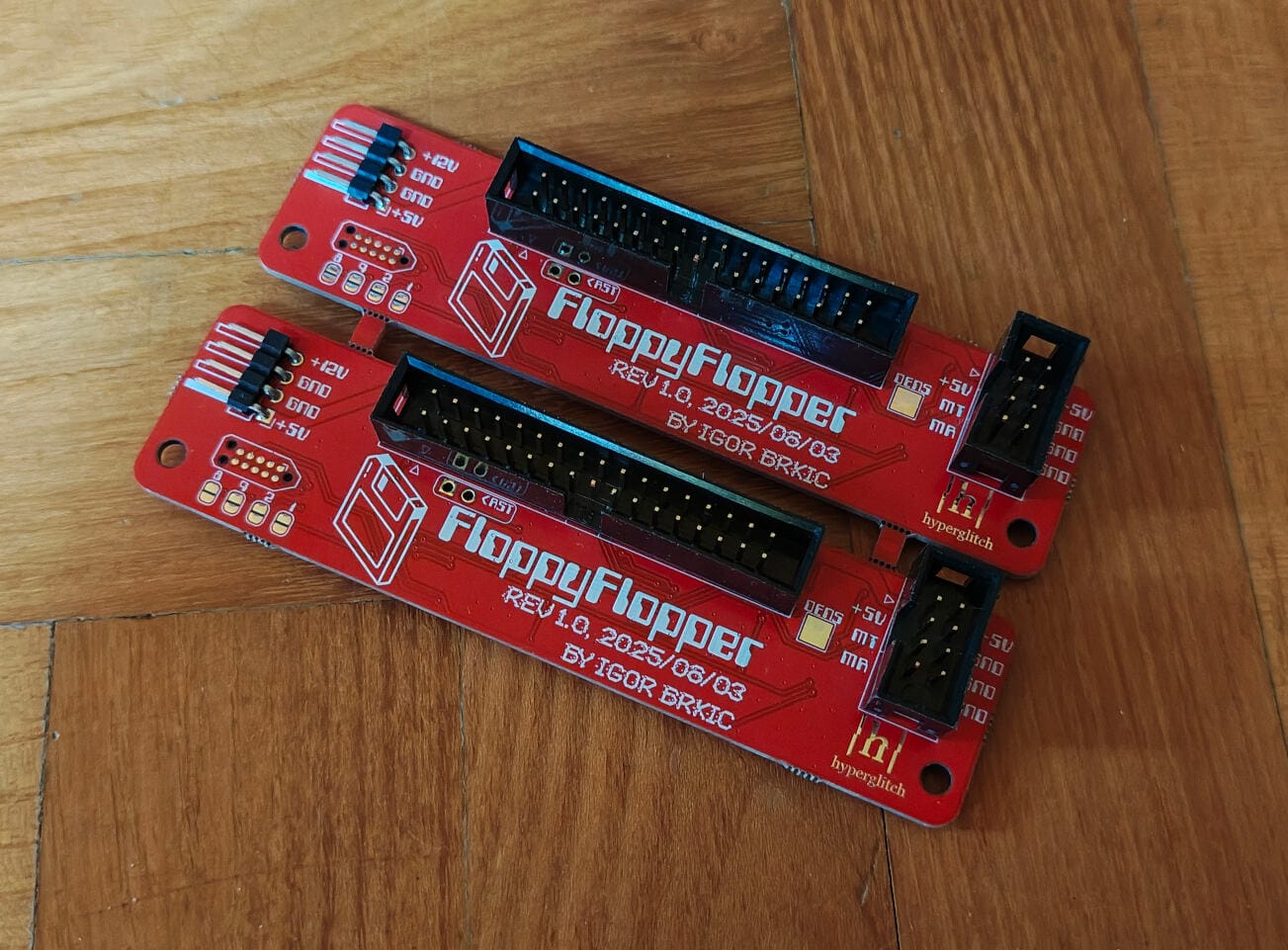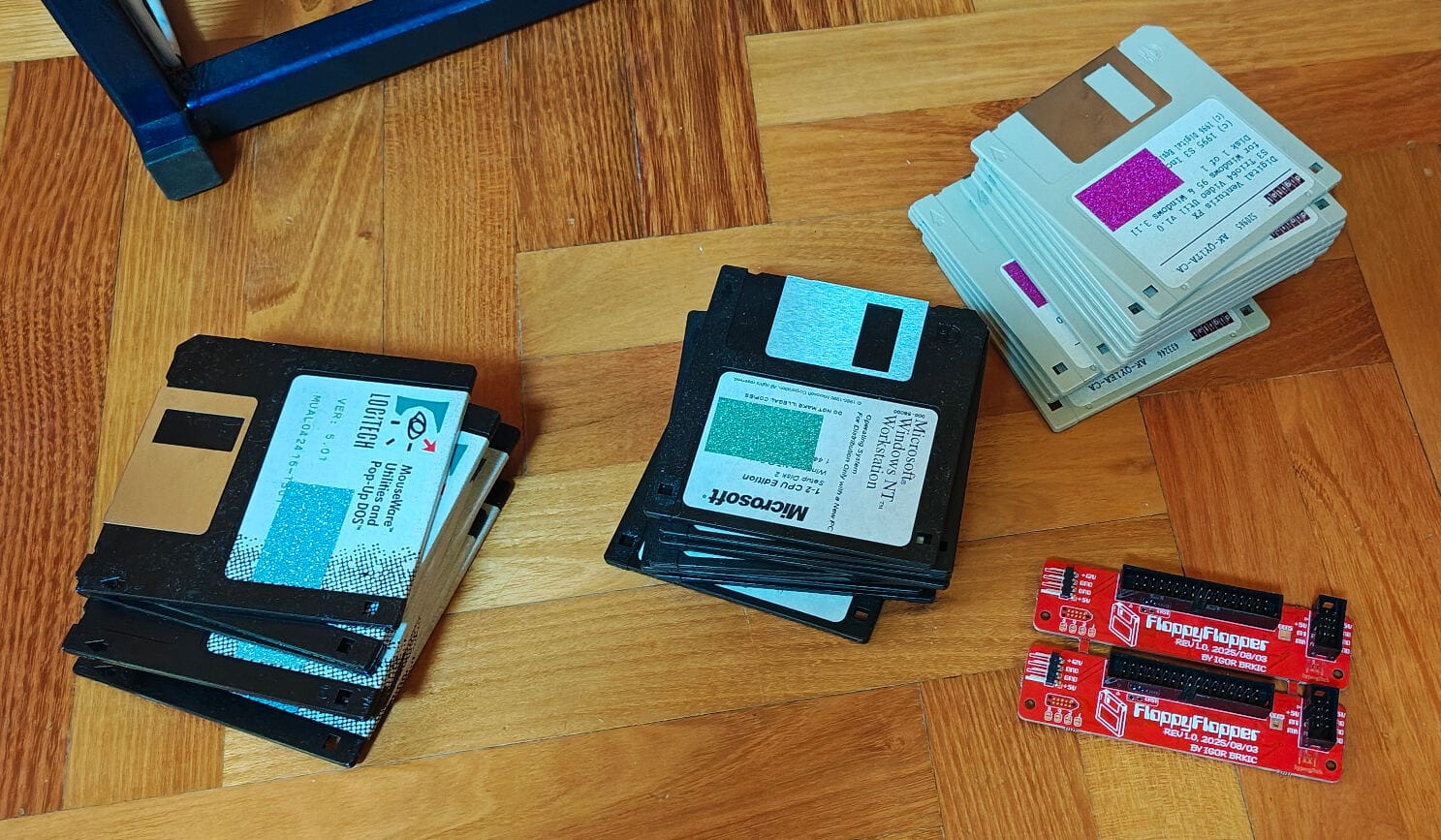Floppy Flopper: The High-Speed Archival Challenge
Floppy Flopper is a physical game built from nine functional disk drives. Players must frantically swap colour-coded disks to match flashing LEDs in a 3x3 grid. The project, currently exhibited in Croatia, uses the physical notches on the disk casings for detection rather than magnetic data.

For those who operated computers in the 1990s, the tactile feedback of a 3.5-inch floppy disk—the spring-loaded shutter, the solid click of insertion, and the mechanical ejection—remains a distinct sensory memory. A developer known as [igor] has engineered a physical game, Floppy Flopper, which utilises nine functioning drives to transform this archival process into a competitive reflex challenge.
The Mechanism
The installation features a welded steel frame supporting a 3x3 grid of standard floppy disk drives. Unlike projects that simulate legacy hardware using NFC tags or optical sensors, this build utilises the original mechanical drives. To manage the hardware without the latency of a central PC, each drive is paired with its own microcontroller.






The system identifies the disks not by reading magnetic data, but by detecting the physical configuration of the write-protect and density notches on the casing. By assigning specific binary values to these physical holes, the system distinguishes between different disks, which are colour-coded with stickers to correspond with the game’s visual cues.
Gameplay and Exhibition
Above each drive sits an RGB LED. The objective requires the player to insert a disk matching the illuminated colour into the corresponding drive. Successful insertion registers a "thunk" and awards thirteen points on a matrix display. As the game progresses, the speed increases, demanding faster hand-eye coordination to keep up with the flashing indicators.
The project is entirely open source, with documentation available for those possessing the requisite surplus of drives. The machine is currently installed at RADIONA in Rijeka, Croatia, where it will remain on display until 5 December 2025.

